![]()
![]()
![]()
![]() 2015 was a mixed bag of a year for Bollywood. On one hand, we saw a lot of new-age filmmakers come up with some really off-beat stuff, while on the other, we were subjected to some same old, regressive, masala films.
The classic confusion that every movie critic faces in picking the top films of the year is whether to go with flicks that have Box Office tills ringing or go with movies that set one’s own heart fluttering.
I have simply avoided the whole dilemma by including both. So without any further ado, here are the top five popular movies of the year:
2015 was a mixed bag of a year for Bollywood. On one hand, we saw a lot of new-age filmmakers come up with some really off-beat stuff, while on the other, we were subjected to some same old, regressive, masala films.
The classic confusion that every movie critic faces in picking the top films of the year is whether to go with flicks that have Box Office tills ringing or go with movies that set one’s own heart fluttering.
I have simply avoided the whole dilemma by including both. So without any further ado, here are the top five popular movies of the year:
![]() 1. Tanu Weds Manu Returns: Banno tera swagger is the sexiest!
1. Tanu Weds Manu Returns: Banno tera swagger is the sexiest!
![]() As the old age saying goes,
As the old age saying goes,
“Marriages are made in heaven, but so are thunder and lightening.”
Around five years ago,
Tanu Weds Manu hit the silver screens recording the unlikely union of its titular characters Tanu (Kangna Ranaut) and Manu (R Madhavan).
Fast-forward four years in reel-time and the fairy-tale ending of the prequel quickly turned into a grim nightmare.
The opposites in Tanu and Manu attracted initially but would they live and grow old with each other? Well that's the amusing question that is explored in the sequel.
Tanu Weds Manu Returns is a funny as hell rom-com and has a plot to match the hilarity. Just like the original, the authentic portrayal of a middle-class family in a small town of India gives the sequel its distinct flavor that adds to its allure.
The movie is undoubtedly a showcase for the massive talent of Ranaut, who sinks her teeth into a double-role challenge this time around, and is ably assisted in performance by a superb ensemble cast.
TWMR is the kind of cinema that the Indian and Pakistani masses crave for. A formula with wedding and marriage at the heart of it simply cannot fail in the subcontinent.
If you love Bollywood, you surely would have loved the film and even if you don’t, this movie shows how terribly entertaining B-Town flicks can be.
[embed width-"620" height="348"]https://vimeo.com/125015966[/embed]
2. Bajrangi Bhaijaan: The cross-border
Bhaijaan!
![]()
If Bollywood is a film genre then
Bajrangi Bhaijaan is arguably one of the best in this category. With a massive superstar in
bhai aka Salman Khan, a ravishing eye-candy in Kareena Kapoor and a powerhouse performer in Nawazuddin Siddiqui, you can hardly go wrong with the masses.
Throw in a chart-busting musical score, some extremely hilarious light moments and well-choreographed action sequences for good measure, and you would be laughing all the way to the bank.
But wait, even the yummiest of film cakes require a sweet cherry on top as a metaphoric coup de grace to go for the total kill at the Box Office. And this elusive ingredient proved to be a cute mute; the adorable little kid, who was an absolute show-stealer.
Long story short,
Bajrangi Bhaijaan is highly entertaining with a gripping storyline and as a bonus the cross-border comedy drama doesn’t even paint Pakistan in a negative light.
[embed width-"620" height="348"]https://vimeo.com/131088673[/embed]
3. Prem Ratan Dhan Payo: Sanskaar rules! (And so does Salman Khan)
![]()
What’s better than one Salman Khan?
Simple!
Two Salman Khans, but with Sooraj R Barjatya’s signature
sanskaar (family values) to woo the family audience.
It took more than 15 years for the super hit
jodi (pair) of Salman Khan and Sooraj Barjatya to reunite but it took less than 15 days for the duo to cross the double-century mark at the Indian Box Office with
Prem Ratan Dhan Payo.
But much to the chagrin of serious cinema lovers,
PRDP is
as typical as Bollywood can get. At times, one wonders whether he is actually watching a movie from the 80s.
But negative nostalgia aside, the movie is a fine, family-oriented fare.
A typical Bollywood
masala flick is usually expected to aid the audience in experiencing a host of emotions; namely laughter, sigh, gasp, and tears and
Prem Ratan Dhan Payo makes us undergo all of the aforementioned variety and then some.
[embed width-"620" height="348"]https://vimeo.com/141164564[/embed]
4. Dilwale: Nostalgia manipulation!
![]()
The idea was to make the iconic
jodi of Bollywood dance around the world, do some stunts and earn a couple of 100 crores.
Dilwale might be a hit at the Box Office but it lacks brains, has low-IQ humour and an underwhelming and trite plot.
The license of getting this timeless duo back on silver screen should've been left to
Karan Johar or Aditya Chopra, who know how to make best use of the pair. Rohit Shetty needs to make a note that ritzy cars that fly cannot make his film an interesting affair.
He is like a sleight of hand magician, who has been coasting on just a couple of tricks. But that’s the thing with a limited number of acts, when the audience gets used to them, you are yesterday’s news in no time.
Dilwale was insanely popular prior to its release but
couldn’t live up to the hype. The iconic tinsel town
jodi is promising when it comes to their on-screen chemistry but this time a terribly impotent script held them back.
[embed width-"620" height="348"]https://vimeo.com/145184394[/embed]
5. Bajirao Mastani: Poetry in motion!
![]()
More than a decade in the making, Sanjay Leela Bhansali’s magnum opus finally hit the theatres this year.
Bajirao Mastani explores the forbidden love between the 18
th century Maratha general Bajirao (Ranveer Singh) and warrior princess Mastani (Deepika Padukone). To complete the tempestuous triangle, we also have Kashibai (Priyanka Chopra), Bajirao’s wife.
They say ‘hell hath no fury like a woman scorned’ and while all three of the leading actors are sizzling in their roles, it is Chopra who raises the mercury with her scorching and nuanced performance, perfectly exhibiting the insecurities of a spurned consort.
With Bhansali at the helm, one always expects a breath-taking production design but the magnificence displayed through the dazzling costumes and the opulent sets is easily matched by the jaw-dropping choreography of the battle sequences.
Whisper it quietly, but the sheer epicness of this cinematic extravaganza has some of the film critics calling it the modern day
Mughal-e-Azam.
[embed width-"620" height="348"]https://vimeo.com/134219069[/embed]
![]() While there are some movies that top charts, some are just unforgettable and leave a mark. Here are the top five movies of the year that were quite impactful in my opinion:
1. Bombay Velvet:
While there are some movies that top charts, some are just unforgettable and leave a mark. Here are the top five movies of the year that were quite impactful in my opinion:
1. Bombay Velvet: A magnificent disaster!
![]() Bombay Velvet
Bombay Velvet is rigmarole of an ordinary man going against all odds to become a big shot for his love Rosie – an aspiring jazz singer – and how their hopes and dreams collide with their individual realities as they survive in a newly independent India that struggles to find its feet.
The movie was an amalgamation of earnest performances and a done-to-death story format. It can pass as a pastiche of Hollywood gangsterism bearing imprints of Martin Scorsese’s style but it was the art direction that recharged the otherwise
lacklustre yarn.
Any cinephile who is a sucker for a period-costume piece would immediately fall in love with Anurag Kashyap’s chef-d’oeuvre. With swish vintage cars, glinting guns, infrastructure of the city and carefully draped evening gowns with equal attention to the earthy Eastern remnants of a place that had not yet become a metropolis, Kashyap left no stone unturned to take the audience back into the India of 60’s.
Rajeev Ravi’s moving cinematography, Amit Trivedi’s beautiful background score and Thelma Schoonmaker’s top class editing ameliorated the film which ultimately is one-dimensional in its philosophy.
[embed width-"620" height="348"]https://vimeo.com/122614813[/embed]
2. Hunterrr: Hunting down taboos!
![]()
In a film industry where item number peppered fares are masqueraded as family entertainers,
Hunterrr manages to be a non-vulgar, sex comedy.
Despite belonging to the same genre as movie franchises
Grand Masti and
Kya Kool Hain Hum, the Gulshan Deviah starrer does not qualify as a raunchy adult comedy. If anything, it’s more of a ‘coming of age’ flick (no pun intended) which has shades of Steve McQueen’s
Shame and Joseph Gordon Levitt’s
Don Jon.
The movie chronicles the sexual exploits of a male nymphomaniac in a middle-class urban Indian milieu.
Long story short,
Hunterrr is a must-watch for anyone who wishes to see true love grapple with irrational male libido in a seamless recreation of a period sub continental setting.
https://www.youtube.com/watch?v=ytDp30vuiCo
3. Manjhi: The Mountain Man: A chiselled love story!
![]()
Shah Jahan, your act is up! Make way for Dasarth Manjhi, the new lover extraordinaire in town. Taj Mahal might be universally lauded as the ultimate symbol of love but it’s not a patch on a road chiselled and hammered through a hardy mountain with
the iron will of a single person.
Despite the recent glut of biopics hitting the Indian screens,
Manjhi manages to inspire like no other. The movie narrates the true story of Dasarth Manjhi, who out of love for his deceased wife carves a way through a rugged mountain using only a hammer and a chisel.
The movie rests on the shoulders of Nawazuddin Siddiqui who plays the titular character. The powerhouse performer could read the label from back of a ketchup bottle and still have all of us mesmerised and he doesn’t disappoint playing the protagonist this time either.
Manjhi had the potential of becoming a masterpiece but average storytelling, under-baked subplots and less than stellar production values took away from the potential of the premise.
But make no mistake, the film still has more soul than your typical Bollywood pieces and is sure to warm even the coldest of hearts through this tragic romance-tale of an inspirational individual.
[embed width-"620" height="348"]https://vimeo.com/133734023[/embed]
4. Masaan: Fly away!
![]()
There are films that are supposed to be watched and then there are movies that are meant to be experienced.
Masaan falls in the latter category.
Masaan (Crematorium in Sanskrit), narrates two parallel story in the holy Indian city of Varanasi where lives of the principal characters unfold against the backdrop of the Cremation
ghats on the banks of river Ganges.
The protagonists of both narratives are unwilling to sacrifice their happiness by adhering to the primitive societal barriers of gender and caste. It is all the more ironic when you consider that these main characters are denied life freedom in the holy city where Hinduism promises soul liberation from the cosmic life cycle.
Packed in a mere 109 minutes, the movie doesn’t just touch upon the universally enduring theme of life and loss but it additionally talks about redemption and repentance amongst others without being overtly melodramatic, due in no small part to some amazingly nuanced acting.
The evocative cinematography and production design, along with a soul-stirring musical score combine together to create this delirious, melancholic concoction that is sure to leave every single viewer liberated.
[embed width-"620" height="348"]https://vimeo.com/134652584[/embed]
5. Tamasha: A conformist rebel!
![]() Tamasha
Tamasha, a story that was simple but intricately executed. A non-linear narrative that was haphazardly treated but yet it was alluring in its form.
It was yet another one of Imtiaz Ali’s
mind-jolting ventures of self-discovery. The movie transpired subconsciously as it progressed, leaving the viewer in a vortex of emotional conflict. It makes one question the complexities of a tedious life and to question the inhibitions that leave a person unable to chase his dreams.
Through commendable acting skills of Ranbir Kapoor, Ali was triumphant in opening a window to soul-searching and stirring the urge to channel all energies in discovering the purpose of being.
In the lyrical words of the protagonist, aided by none other than the maestro AR Rahman,
“Dil ka bhanwar kahe sun saathiya, chup na dupatte me tu o chhaliyaa”
https://www.youtube.com/watch?v=VN_qxutU_qc
[poll id="396"]


 The film is set in a high school in Dehradun, known for its cold climate – a fact you can only tell by the clothes worn by the men but, in memory of
The film is set in a high school in Dehradun, known for its cold climate – a fact you can only tell by the clothes worn by the men but, in memory of  I was always a fan of KJo’s business acumen and after SOTY and his selection of these three new, completely fresh faces, I have become a believer. Siddharth is hot, hot, hot, but also really, really talented. Varun I found to be even better than Siddharth, given his superior dancing skills and earthier feel that should open him up to a variety of roles. Alia has also not done a bad job at all. Given the fact that her character is quite reminiscent of
I was always a fan of KJo’s business acumen and after SOTY and his selection of these three new, completely fresh faces, I have become a believer. Siddharth is hot, hot, hot, but also really, really talented. Varun I found to be even better than Siddharth, given his superior dancing skills and earthier feel that should open him up to a variety of roles. Alia has also not done a bad job at all. Given the fact that her character is quite reminiscent of  One of the things that I found particularly annoying is the fact that none of the good songs are original. From Nazia Hasan’s
One of the things that I found particularly annoying is the fact that none of the good songs are original. From Nazia Hasan’s 
 Mrigdeep Singh Lamba’s Fukrey has mirrored the style established by Raju Hirani. There are multiple moments in the film where you have not fully recovered from your laughter when a new development in the story leaves your mind reeling with emotion. Having said that, like the predecessors of this method, Fukrey is primarily a comedy film, something like Delhi Belly with a Punjabi touch.
Mrigdeep Singh Lamba’s Fukrey has mirrored the style established by Raju Hirani. There are multiple moments in the film where you have not fully recovered from your laughter when a new development in the story leaves your mind reeling with emotion. Having said that, like the predecessors of this method, Fukrey is primarily a comedy film, something like Delhi Belly with a Punjabi touch.
 While the film follows the tried and tested mix of several directors, Fukrey neither bores the audience, nor does it seem repetitive.
The charm of Fukrey is boosted by its committed cast. The characters are detailed and fun. 'Bholi Punjaban', for example, carries a dappled personality: she is narcissistic and foul-mouthed with a 'Sindrella' tattoo on her neck. Meanwhile, the college watchman 'Pandit' - a kind, soft spoken yet corrupt guy, leaks exam papers, seeking backdoor registration for unqualified students in exchange for money. Both Richa Chadda and Pankaj Tripathi have handled their roles splendidly. Seeing Richa in a purely comic role after her intense acting in Gangs of Wasseypur was a joy. Similarly, Pankaj Triptahi’s role was a complete contrast to his performance in Gangs of Wasseypur, showing his adaptability as an actor.
While the film follows the tried and tested mix of several directors, Fukrey neither bores the audience, nor does it seem repetitive.
The charm of Fukrey is boosted by its committed cast. The characters are detailed and fun. 'Bholi Punjaban', for example, carries a dappled personality: she is narcissistic and foul-mouthed with a 'Sindrella' tattoo on her neck. Meanwhile, the college watchman 'Pandit' - a kind, soft spoken yet corrupt guy, leaks exam papers, seeking backdoor registration for unqualified students in exchange for money. Both Richa Chadda and Pankaj Tripathi have handled their roles splendidly. Seeing Richa in a purely comic role after her intense acting in Gangs of Wasseypur was a joy. Similarly, Pankaj Triptahi’s role was a complete contrast to his performance in Gangs of Wasseypur, showing his adaptability as an actor.
 The four protagonists of the film are also well-selected. While Ali Fazal as 'Zafar' is relatively unimpressive, the other three leads are hilarious. Pulkit Samrat, being the smart wizard, reminds you of 'Amar' from Andaz Apna Apna or 'Raju' of Hera Pheri - good at heart but willing to make easy money through shady means. Pulkit’s comic timing is spectacular and his chemistry with 'Choocha' is excellent. 'Choocha' on the other hand is a cross between 'Zach Galfianikis' of Hangover and 'Babu Bhaiyya' of Hera Pheri. He is spectacular when it comes to dreaming the lottery results but a certified idiot in all other respects. Still, he surprises you when it comes to his survival instincts. His scenes with Richa Chadda are utterly hilarious. Manjot Singh is also enjoyable in his role as 'Sardar Ji'. He portrays a nice guy who does not want to charge people who eat at his father’s shop yet wishes for admission into a college without having to study for it. He swears that he will teach a lesson to his cheating girlfriend but ends up waving and smiling at her.
The four protagonists of the film are also well-selected. While Ali Fazal as 'Zafar' is relatively unimpressive, the other three leads are hilarious. Pulkit Samrat, being the smart wizard, reminds you of 'Amar' from Andaz Apna Apna or 'Raju' of Hera Pheri - good at heart but willing to make easy money through shady means. Pulkit’s comic timing is spectacular and his chemistry with 'Choocha' is excellent. 'Choocha' on the other hand is a cross between 'Zach Galfianikis' of Hangover and 'Babu Bhaiyya' of Hera Pheri. He is spectacular when it comes to dreaming the lottery results but a certified idiot in all other respects. Still, he surprises you when it comes to his survival instincts. His scenes with Richa Chadda are utterly hilarious. Manjot Singh is also enjoyable in his role as 'Sardar Ji'. He portrays a nice guy who does not want to charge people who eat at his father’s shop yet wishes for admission into a college without having to study for it. He swears that he will teach a lesson to his cheating girlfriend but ends up waving and smiling at her.
 In the first fifteen minutes of the film, I thought that Fukrey will offer several smiles but fall short of making me laugh. I spent the next hour and a half laughing uncontrollably at the characters' antics. I highly recommended watching Fukrey!
Read more by Sami
In the first fifteen minutes of the film, I thought that Fukrey will offer several smiles but fall short of making me laugh. I spent the next hour and a half laughing uncontrollably at the characters' antics. I highly recommended watching Fukrey!
Read more by Sami 
 Photo: http://mainhoonshahidafridi.com/[/caption]
Humayun Saeed plays Akbar Deen, a small town cricketer who makes it big and gets accused of narcotics and womanising, thus ending his high profile cricket career. The
Photo: http://mainhoonshahidafridi.com/[/caption]
Humayun Saeed plays Akbar Deen, a small town cricketer who makes it big and gets accused of narcotics and womanising, thus ending his high profile cricket career. The  Photo: http://mainhoonshahidafridi.com/[/caption]
The film was true to the audience and true to the national sentiment associated with cricket. The audiences whooped and cheered as the hero fought and cried and sat motionless as he got beat. Not one cheap leer as Mahnoor Baloch ran on the beach in skimpy shorts (shows our audiences are growing up too, thankfully) and not one sarcastic hoot as the new boy on screen broke into uncontrollable sobs (the tears were real but still need work).
[caption id="" align="alignnone" width="668"]
Photo: http://mainhoonshahidafridi.com/[/caption]
The film was true to the audience and true to the national sentiment associated with cricket. The audiences whooped and cheered as the hero fought and cried and sat motionless as he got beat. Not one cheap leer as Mahnoor Baloch ran on the beach in skimpy shorts (shows our audiences are growing up too, thankfully) and not one sarcastic hoot as the new boy on screen broke into uncontrollable sobs (the tears were real but still need work).
[caption id="" align="alignnone" width="668"] Photo: http://mainhoonshahidafridi.com/[/caption]
Bravo to the director for knowing the people who will be
Photo: http://mainhoonshahidafridi.com/[/caption]
Bravo to the director for knowing the people who will be  Photo: http://mainhoonshahidafridi.com/[/caption]
I especially loved the subtle messages given to the audiences; the cross between the Moulvi and Michael was a wonderful depiction of how tolerance builds nations and becomes our strength. The dialogue was strong, overall acting deserves a round of applause (except for the random chick here and there, wish they’d selected better actresses instead of better-looking actresses) and apart from a few sloppily tied loose ends,
Photo: http://mainhoonshahidafridi.com/[/caption]
I especially loved the subtle messages given to the audiences; the cross between the Moulvi and Michael was a wonderful depiction of how tolerance builds nations and becomes our strength. The dialogue was strong, overall acting deserves a round of applause (except for the random chick here and there, wish they’d selected better actresses instead of better-looking actresses) and apart from a few sloppily tied loose ends,  Photo: http://mainhoonshahidafridi.com/[/caption]
Way to go, Pakistan.
Photo: http://mainhoonshahidafridi.com/[/caption]
Way to go, Pakistan. 

 Kareena Kapoor Khan plays an 'NGO-type' in Gori Tere Pyar Mein. Photo: Facebook page Gori Tere Pyar Mein[/caption]
Overall, the movie provides light entertainment and a fun watch, with some moments that may replay in the head later.
Kareena Kapoor Khan plays an 'NGO-type' in Gori Tere Pyar Mein. Photo: Facebook page Gori Tere Pyar Mein[/caption]
Overall, the movie provides light entertainment and a fun watch, with some moments that may replay in the head later.


 The story would begin with
The story would begin with  The evil sautayli ma (step-mother) would ask
The evil sautayli ma (step-mother) would ask 
 This famous
This famous  The dialogue would then prompt a bad ass response from
The dialogue would then prompt a bad ass response from  Brevity and Bollywood do not get along too well, the tagline
Brevity and Bollywood do not get along too well, the tagline  As will
As will 
 Poor
Poor 
 If anybody deserves a song encapsulating her existential dilemmas in the comforting arms of
If anybody deserves a song encapsulating her existential dilemmas in the comforting arms of  Especially after all that the Starks have suffered at the hands of the Lannisters.
Especially after all that the Starks have suffered at the hands of the Lannisters.
 But hey, at least we have the
But hey, at least we have the  All photos: Shehzad Ghias
All photos: Shehzad Ghias
 Photo: IMDb[/caption]
Rosie (
Photo: IMDb[/caption]
Rosie ( Photo: Bombay Velvet Facebook Page[/caption]
[caption id="" align="alignnone" width="540"]
Photo: Bombay Velvet Facebook Page[/caption]
[caption id="" align="alignnone" width="540"] Photo: Bombay Velvet Facebook Page[/caption]
Playing the role of an antagonist is the director-turned-actor
Photo: Bombay Velvet Facebook Page[/caption]
Playing the role of an antagonist is the director-turned-actor  Photo: Bombay Velvet Facebook page[/caption]
It is sad and disappointing in equal measures to note the fact that Bombay Velvet has faltered to a great extent in terms of delivering a quality movie-going experience. Suffice to say that it has imploded under the high expectation audiences had from this particular movie and I feel it failed to deliver.
However, what this movie has in abundance is style, panache and a befitting representation of the biggest metropolis of India during the 50-60s. Ranging from the look and feel of the movie as a whole, to dresses, cars, and even depicting Bombay in all of its moralistically flawed and vice but beguiling magnificence, which is a far cry from the high rise corporate Mumbai of today.
[caption id="" align="alignnone" width="540"]
Photo: Bombay Velvet Facebook page[/caption]
It is sad and disappointing in equal measures to note the fact that Bombay Velvet has faltered to a great extent in terms of delivering a quality movie-going experience. Suffice to say that it has imploded under the high expectation audiences had from this particular movie and I feel it failed to deliver.
However, what this movie has in abundance is style, panache and a befitting representation of the biggest metropolis of India during the 50-60s. Ranging from the look and feel of the movie as a whole, to dresses, cars, and even depicting Bombay in all of its moralistically flawed and vice but beguiling magnificence, which is a far cry from the high rise corporate Mumbai of today.
[caption id="" align="alignnone" width="540"] Photo: Bombay Velvet Facebook Page[/caption]
One thing that stays apparent throughout the entirety of the movie is the inspiration, or you can say homage, paid to different Hollywood movies, be it
Photo: Bombay Velvet Facebook Page[/caption]
One thing that stays apparent throughout the entirety of the movie is the inspiration, or you can say homage, paid to different Hollywood movies, be it  Photo: Bombay Velvet Facebook Page[/caption]
Sharma has not put forth her A-game either; only God knows where her depth in acting went, which was recently delivered by a potent performance in
Photo: Bombay Velvet Facebook Page[/caption]
Sharma has not put forth her A-game either; only God knows where her depth in acting went, which was recently delivered by a potent performance in  Photo: Bombay Velvet Facebook Page[/caption]
To sum it all up, this is Kashyap’s failed transition from the independent movies to big mainstream Bollywood movies. Bombay Velvet is a movie which can only be tolerated once and that too with some patience involved. Watch it only for the spectacular period setting, the sets and the fancy wardrobes shown throughout the movie. Bombay Velvet is like a malignant tumour which becomes inoperable by the second half of the movie.
Simply put, avoiding it at all cost will be the best option. I would rate it 0.5 out of 10.
Photo: Bombay Velvet Facebook Page[/caption]
To sum it all up, this is Kashyap’s failed transition from the independent movies to big mainstream Bollywood movies. Bombay Velvet is a movie which can only be tolerated once and that too with some patience involved. Watch it only for the spectacular period setting, the sets and the fancy wardrobes shown throughout the movie. Bombay Velvet is like a malignant tumour which becomes inoperable by the second half of the movie.
Simply put, avoiding it at all cost will be the best option. I would rate it 0.5 out of 10.
 Photo: Jawani Phir Nahi Ani Facebook page[/caption]
...is every Pakistani bachelor’s motto because getting a visa to
Photo: Jawani Phir Nahi Ani Facebook page[/caption]
...is every Pakistani bachelor’s motto because getting a visa to  Photo: Photo: Jawani Phir Nahi Ani Facebook page[/caption]
JPNA’s male characters are appealingly recognisable – the slick, sweet talker (Humayun Saeed), the slightly overweight class quipster (Ahmed Butt), the self-conscious dork (Vasay Chaudry), and the perennially skirt-chasing Don Juan (
Photo: Photo: Jawani Phir Nahi Ani Facebook page[/caption]
JPNA’s male characters are appealingly recognisable – the slick, sweet talker (Humayun Saeed), the slightly overweight class quipster (Ahmed Butt), the self-conscious dork (Vasay Chaudry), and the perennially skirt-chasing Don Juan ( Photo: Screenshot[/caption]
Despite the film’s grossly frequent misogynistic overtures (please refer to all scenes from Thailand and the final courtroom scene), the female characters still manage to take charge of JPNA and steal the spotlight.
The heady combination of a hormonally charged up, very pregnant (both in reel and real life), gun-toting Pakhtun wife (
Photo: Screenshot[/caption]
Despite the film’s grossly frequent misogynistic overtures (please refer to all scenes from Thailand and the final courtroom scene), the female characters still manage to take charge of JPNA and steal the spotlight.
The heady combination of a hormonally charged up, very pregnant (both in reel and real life), gun-toting Pakhtun wife ( Photo: Jawani Phir Nahi Ani Facebook page[/caption]
Everything is a product in JPNA, so much so that even the cast has trouble separating out what they think is marketable to the Pakistani masses from what they actually want.
Does Hamza Ali Abbasi really want to wear that much Levis? There is such a thing as too much crucifixes, plaid and denim on a grown man.
And does Sohai Ali really want to openly reveal her beauty as a result of skin bleaching
Photo: Jawani Phir Nahi Ani Facebook page[/caption]
Everything is a product in JPNA, so much so that even the cast has trouble separating out what they think is marketable to the Pakistani masses from what they actually want.
Does Hamza Ali Abbasi really want to wear that much Levis? There is such a thing as too much crucifixes, plaid and denim on a grown man.
And does Sohai Ali really want to openly reveal her beauty as a result of skin bleaching  Photo: Jawani Phir Nahi Ani Facebook page[/caption]
JPNA made me laugh till my kidney hurt. But that doesn’t change the fact that that the film is essentially a three hour Humayun Saeed self-congratulatory fantasy. For the sake of Allah, please tell me why the man insists on dressing like a dulha (groom) with Shahrukh Khan-esque sultry gazes and highlighted hair rivalling on-screen love interest Mehwish Hayat’s hair?
With maybe 30 minutes of a plot that has been unbearably diluted to a feature length film – albeit with a great cast and attractive celebrity cameos (ahem, hey, Fahad Mustafa!) – my fellow moviegoers and I gasped in mild horror and looked at our watches when the intermission sign flashed on the screen because, no lie, at hour one I was satisfied and ready to go home.
6. In Lollywood, past is the past
[caption id="" align="alignnone" width="600"]
Photo: Jawani Phir Nahi Ani Facebook page[/caption]
JPNA made me laugh till my kidney hurt. But that doesn’t change the fact that that the film is essentially a three hour Humayun Saeed self-congratulatory fantasy. For the sake of Allah, please tell me why the man insists on dressing like a dulha (groom) with Shahrukh Khan-esque sultry gazes and highlighted hair rivalling on-screen love interest Mehwish Hayat’s hair?
With maybe 30 minutes of a plot that has been unbearably diluted to a feature length film – albeit with a great cast and attractive celebrity cameos (ahem, hey, Fahad Mustafa!) – my fellow moviegoers and I gasped in mild horror and looked at our watches when the intermission sign flashed on the screen because, no lie, at hour one I was satisfied and ready to go home.
6. In Lollywood, past is the past
[caption id="" align="alignnone" width="600"] Photo: Jawani Phir Nahi Ani Facebook page[/caption]
JPNA is Lollywood’s conciliatory move telling you the past is prologue.
The soundtrack hits the spot by sneakily following the current Bolly inspired formula for acoustic success; Yo Yo Honey Singh wali beat, scantily clad women, film’s leading men mock rapping in a dark room with sunglasses on for non-visual reasons, and approximately thirty random shout outs to five different alcohol brands.
Bacardi may or may not have been a film sponsor.
Either way, the soundtrack fills the bill and this author guarantees that Fair and Lovely and Nach Ke Dekha will be playing in all shaadi (wedding) halls this winter.
[embed width=“620”]http://www.dailymotion.com/video/x378enp[/embed]
The wedding sets and choreography rival a
Photo: Jawani Phir Nahi Ani Facebook page[/caption]
JPNA is Lollywood’s conciliatory move telling you the past is prologue.
The soundtrack hits the spot by sneakily following the current Bolly inspired formula for acoustic success; Yo Yo Honey Singh wali beat, scantily clad women, film’s leading men mock rapping in a dark room with sunglasses on for non-visual reasons, and approximately thirty random shout outs to five different alcohol brands.
Bacardi may or may not have been a film sponsor.
Either way, the soundtrack fills the bill and this author guarantees that Fair and Lovely and Nach Ke Dekha will be playing in all shaadi (wedding) halls this winter.
[embed width=“620”]http://www.dailymotion.com/video/x378enp[/embed]
The wedding sets and choreography rival a 
 2015 was a mixed bag of a year for Bollywood. On one hand, we saw a lot of new-age filmmakers come up with some really off-beat stuff, while on the other, we were subjected to some same old, regressive, masala films.
The classic confusion that every movie critic faces in picking the top
2015 was a mixed bag of a year for Bollywood. On one hand, we saw a lot of new-age filmmakers come up with some really off-beat stuff, while on the other, we were subjected to some same old, regressive, masala films.
The classic confusion that every movie critic faces in picking the top  1. Tanu Weds Manu Returns: Banno tera swagger is the sexiest!
1. Tanu Weds Manu Returns: Banno tera swagger is the sexiest!
 As the old age saying goes,
As the old age saying goes,
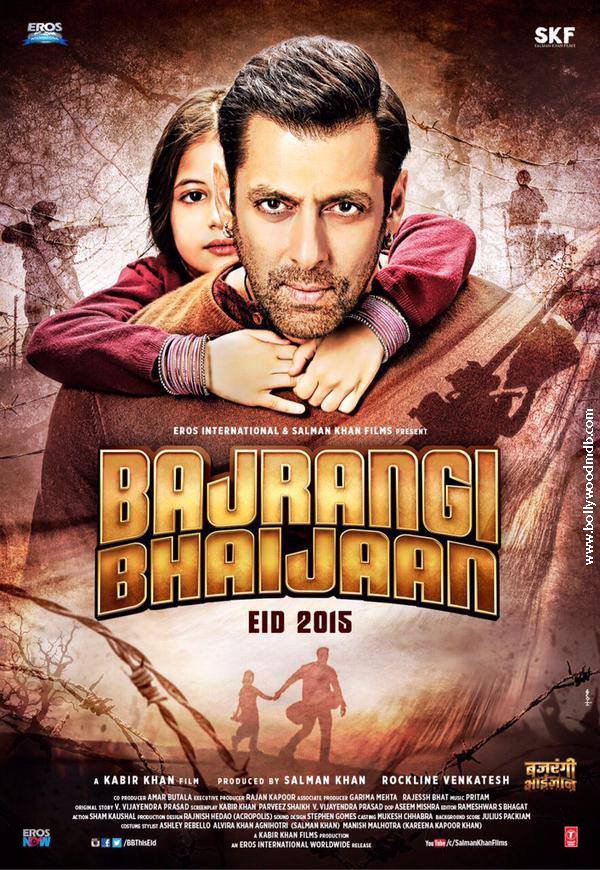 If Bollywood is a film genre then
If Bollywood is a film genre then 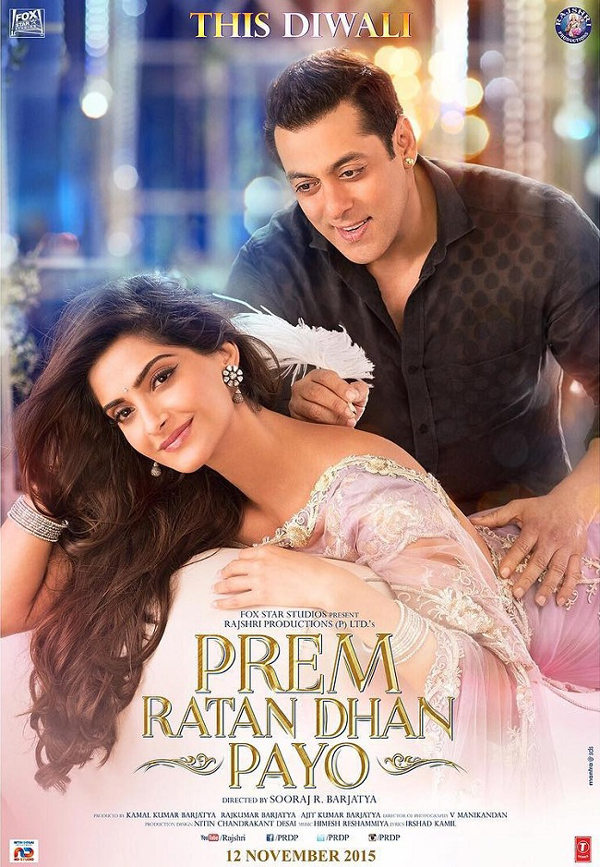 What’s better than one Salman Khan?
Simple!
Two Salman Khans, but with Sooraj R Barjatya’s signature sanskaar (family values) to woo the family audience.
It took more than 15 years for the super hit jodi (pair) of Salman Khan and Sooraj Barjatya to reunite but it took less than 15 days for the duo to cross the double-century mark at the Indian Box Office with Prem Ratan Dhan Payo.
But much to the chagrin of serious cinema lovers, PRDP is
What’s better than one Salman Khan?
Simple!
Two Salman Khans, but with Sooraj R Barjatya’s signature sanskaar (family values) to woo the family audience.
It took more than 15 years for the super hit jodi (pair) of Salman Khan and Sooraj Barjatya to reunite but it took less than 15 days for the duo to cross the double-century mark at the Indian Box Office with Prem Ratan Dhan Payo.
But much to the chagrin of serious cinema lovers, PRDP is 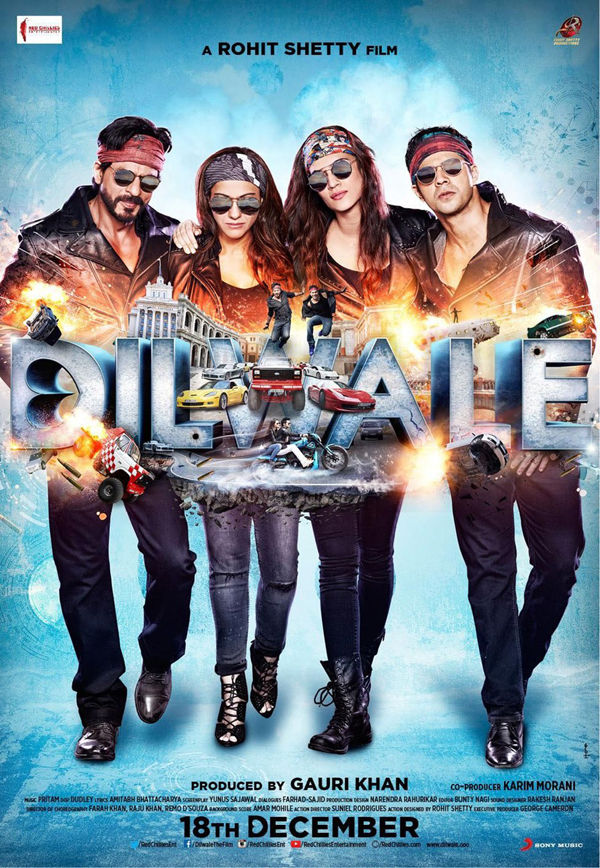 The idea was to make the iconic jodi of Bollywood dance around the world, do some stunts and earn a couple of 100 crores.
Dilwale might be a hit at the Box Office but it lacks brains, has low-IQ humour and an underwhelming and trite plot.
The license of getting this timeless duo back on silver screen should've been left to
The idea was to make the iconic jodi of Bollywood dance around the world, do some stunts and earn a couple of 100 crores.
Dilwale might be a hit at the Box Office but it lacks brains, has low-IQ humour and an underwhelming and trite plot.
The license of getting this timeless duo back on silver screen should've been left to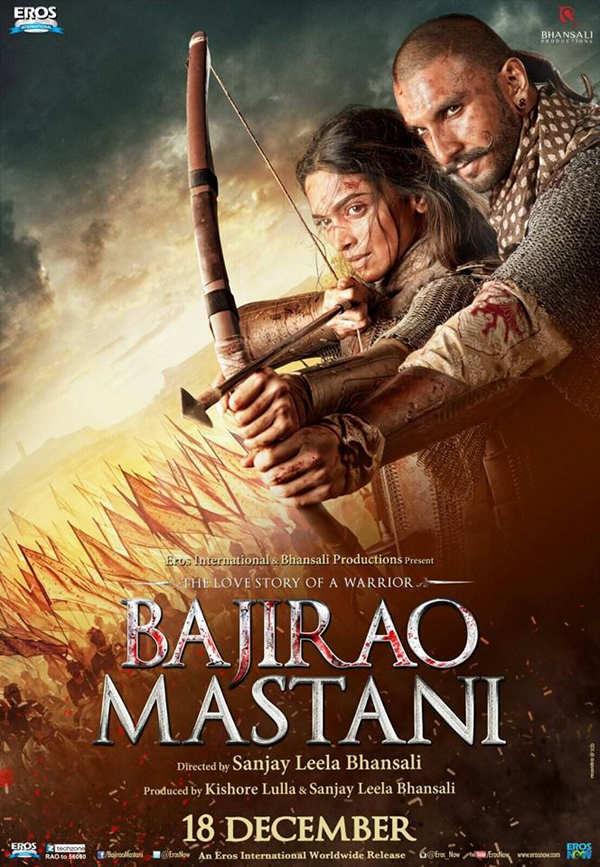 More than a decade in the making, Sanjay Leela Bhansali’s magnum opus finally hit the theatres this year.
More than a decade in the making, Sanjay Leela Bhansali’s magnum opus finally hit the theatres this year.  While there are some movies that top charts, some are just unforgettable and leave a mark. Here are the top five movies of the year that were quite impactful in my opinion:
1. Bombay Velvet: A magnificent disaster!
While there are some movies that top charts, some are just unforgettable and leave a mark. Here are the top five movies of the year that were quite impactful in my opinion:
1. Bombay Velvet: A magnificent disaster!
 Bombay Velvet is rigmarole of an ordinary man going against all odds to become a big shot for his love Rosie – an aspiring jazz singer – and how their hopes and dreams collide with their individual realities as they survive in a newly independent India that struggles to find its feet.
The movie was an amalgamation of earnest performances and a done-to-death story format. It can pass as a pastiche of Hollywood gangsterism bearing imprints of Martin Scorsese’s style but it was the art direction that recharged the otherwise
Bombay Velvet is rigmarole of an ordinary man going against all odds to become a big shot for his love Rosie – an aspiring jazz singer – and how their hopes and dreams collide with their individual realities as they survive in a newly independent India that struggles to find its feet.
The movie was an amalgamation of earnest performances and a done-to-death story format. It can pass as a pastiche of Hollywood gangsterism bearing imprints of Martin Scorsese’s style but it was the art direction that recharged the otherwise 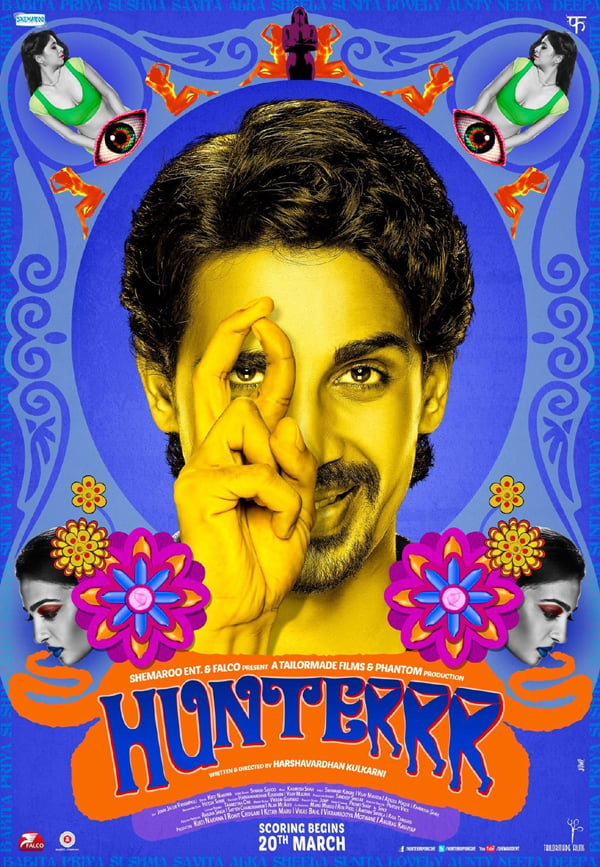 In a film industry where item number peppered fares are masqueraded as family entertainers, Hunterrr manages to be a non-vulgar, sex comedy.
Despite belonging to the same genre as movie franchises Grand Masti and Kya Kool Hain Hum, the Gulshan Deviah starrer does not qualify as a raunchy adult comedy. If anything, it’s more of a ‘coming of age’ flick (no pun intended) which has shades of Steve McQueen’s Shame and Joseph Gordon Levitt’s Don Jon.
The movie chronicles the sexual exploits of a male nymphomaniac in a middle-class urban Indian milieu.
Long story short, Hunterrr is a must-watch for anyone who wishes to see true love grapple with irrational male libido in a seamless recreation of a period sub continental setting.
https://www.youtube.com/watch?v=ytDp30vuiCo
3. Manjhi: The Mountain Man: A chiselled love story!
In a film industry where item number peppered fares are masqueraded as family entertainers, Hunterrr manages to be a non-vulgar, sex comedy.
Despite belonging to the same genre as movie franchises Grand Masti and Kya Kool Hain Hum, the Gulshan Deviah starrer does not qualify as a raunchy adult comedy. If anything, it’s more of a ‘coming of age’ flick (no pun intended) which has shades of Steve McQueen’s Shame and Joseph Gordon Levitt’s Don Jon.
The movie chronicles the sexual exploits of a male nymphomaniac in a middle-class urban Indian milieu.
Long story short, Hunterrr is a must-watch for anyone who wishes to see true love grapple with irrational male libido in a seamless recreation of a period sub continental setting.
https://www.youtube.com/watch?v=ytDp30vuiCo
3. Manjhi: The Mountain Man: A chiselled love story!
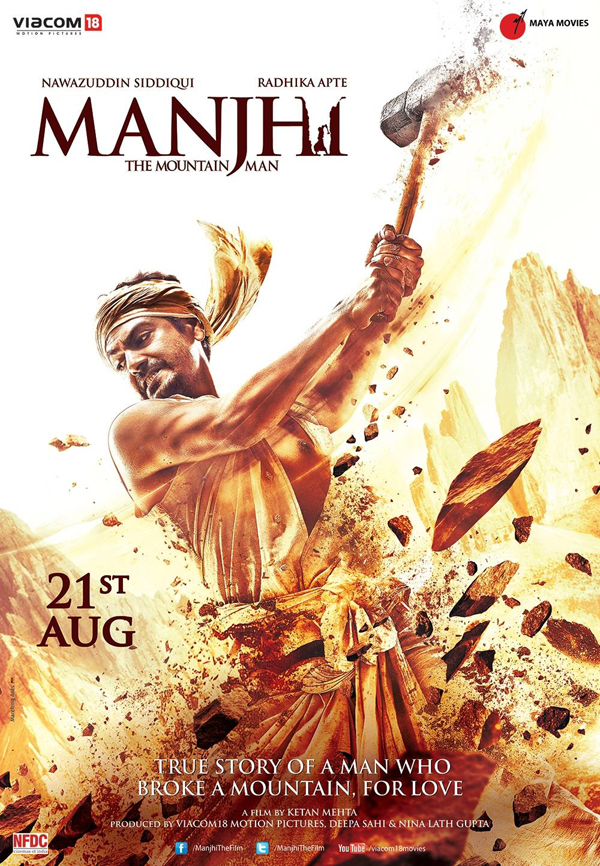 Shah Jahan, your act is up! Make way for Dasarth Manjhi, the new lover extraordinaire in town. Taj Mahal might be universally lauded as the ultimate symbol of love but it’s not a patch on a road chiselled and hammered through a hardy mountain with
Shah Jahan, your act is up! Make way for Dasarth Manjhi, the new lover extraordinaire in town. Taj Mahal might be universally lauded as the ultimate symbol of love but it’s not a patch on a road chiselled and hammered through a hardy mountain with 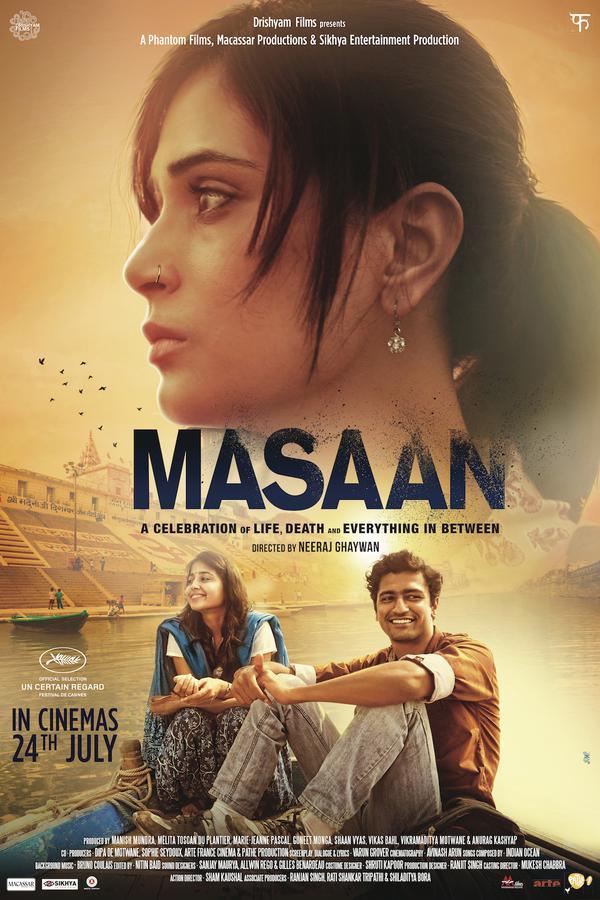 There are films that are supposed to be watched and then there are movies that are meant to be experienced. Masaan falls in the latter category.
Masaan (Crematorium in Sanskrit), narrates two parallel story in the holy Indian city of Varanasi where lives of the principal characters unfold against the backdrop of the Cremation ghats on the banks of river Ganges.
The protagonists of both narratives are unwilling to sacrifice their happiness by adhering to the primitive societal barriers of gender and caste. It is all the more ironic when you consider that these main characters are denied life freedom in the holy city where Hinduism promises soul liberation from the cosmic life cycle.
Packed in a mere 109 minutes, the movie doesn’t just touch upon the universally enduring theme of life and loss but it additionally talks about redemption and repentance amongst others without being overtly melodramatic, due in no small part to some amazingly nuanced acting.
The evocative cinematography and production design, along with a soul-stirring musical score combine together to create this delirious, melancholic concoction that is sure to leave every single viewer liberated.
[embed width-"620" height="348"]https://vimeo.com/134652584[/embed]
5. Tamasha: A conformist rebel!
There are films that are supposed to be watched and then there are movies that are meant to be experienced. Masaan falls in the latter category.
Masaan (Crematorium in Sanskrit), narrates two parallel story in the holy Indian city of Varanasi where lives of the principal characters unfold against the backdrop of the Cremation ghats on the banks of river Ganges.
The protagonists of both narratives are unwilling to sacrifice their happiness by adhering to the primitive societal barriers of gender and caste. It is all the more ironic when you consider that these main characters are denied life freedom in the holy city where Hinduism promises soul liberation from the cosmic life cycle.
Packed in a mere 109 minutes, the movie doesn’t just touch upon the universally enduring theme of life and loss but it additionally talks about redemption and repentance amongst others without being overtly melodramatic, due in no small part to some amazingly nuanced acting.
The evocative cinematography and production design, along with a soul-stirring musical score combine together to create this delirious, melancholic concoction that is sure to leave every single viewer liberated.
[embed width-"620" height="348"]https://vimeo.com/134652584[/embed]
5. Tamasha: A conformist rebel!
 Tamasha, a story that was simple but intricately executed. A non-linear narrative that was haphazardly treated but yet it was alluring in its form.
It was yet another one of Imtiaz Ali’s
Tamasha, a story that was simple but intricately executed. A non-linear narrative that was haphazardly treated but yet it was alluring in its form.
It was yet another one of Imtiaz Ali’s 
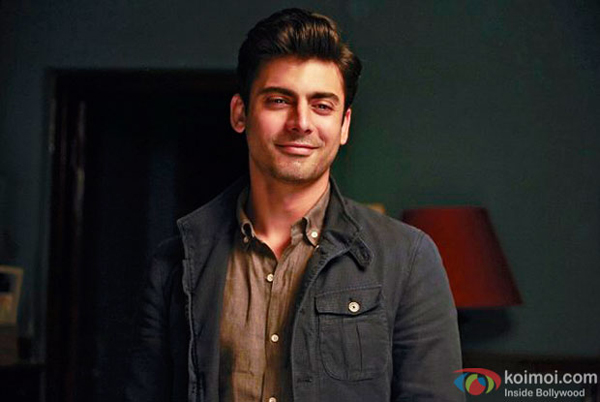 Photo: Koimoi[/caption]
If you are tired of living your life under the weight of all the expectations that come your way for acting to fulfil the ‘faultless child’ tag that you are burdened with and need to break free from the shackles of being eternally considered responsible.
The quintessential black sheep – Arjun Kapoor (Sidharth Malhotra)
[caption id="" align="alignnone" width="600"]
Photo: Koimoi[/caption]
If you are tired of living your life under the weight of all the expectations that come your way for acting to fulfil the ‘faultless child’ tag that you are burdened with and need to break free from the shackles of being eternally considered responsible.
The quintessential black sheep – Arjun Kapoor (Sidharth Malhotra)
[caption id="" align="alignnone" width="600"]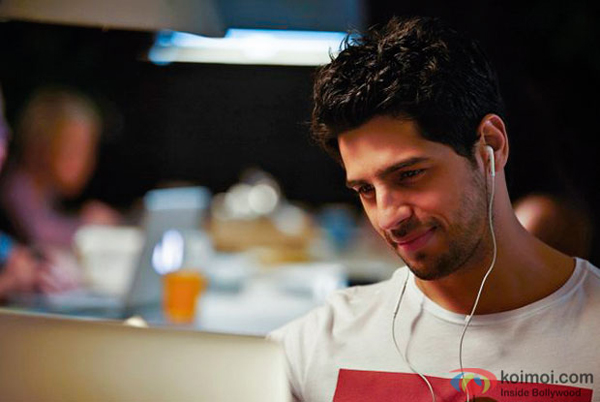 Photo: Koimoi[/caption]
If living forever under the shadow of a successful sibling, always thought off as second best and immature has worn you out.
The estranged couple - Harsh Kapoor (Rajat Kapoor) and Sunita (Ratna Pathak Shah)
[caption id="" align="alignnone" width="600"]
Photo: Koimoi[/caption]
If living forever under the shadow of a successful sibling, always thought off as second best and immature has worn you out.
The estranged couple - Harsh Kapoor (Rajat Kapoor) and Sunita (Ratna Pathak Shah)
[caption id="" align="alignnone" width="600"]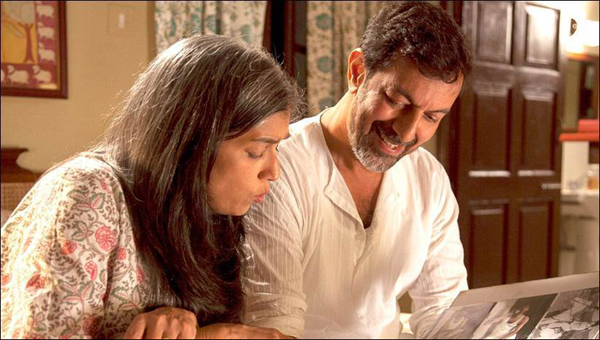 Photo: Screenshot[/caption]
If constant bickering about anything and everything, right down from a leaked pipe all the way up to the serious business of household finances, is slowly eating up your already gone sour relationship.
The happy go lucky daddu (Grandpa) – Amarjeet Kapoor (Rishi Kapoor)
[caption id="" align="alignnone" width="600"]
Photo: Screenshot[/caption]
If constant bickering about anything and everything, right down from a leaked pipe all the way up to the serious business of household finances, is slowly eating up your already gone sour relationship.
The happy go lucky daddu (Grandpa) – Amarjeet Kapoor (Rishi Kapoor)
[caption id="" align="alignnone" width="600"]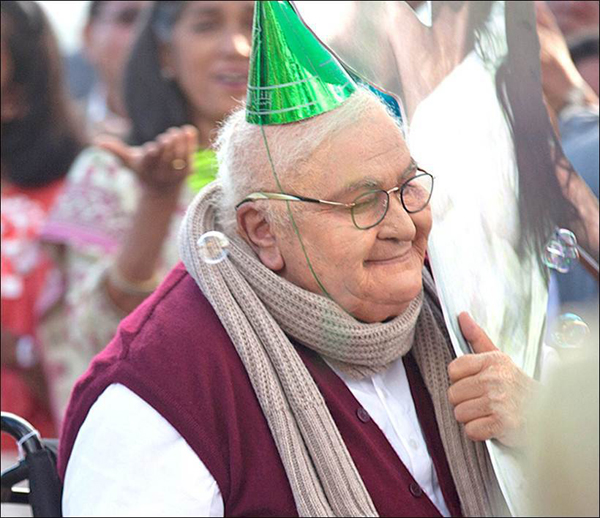 Photo: Screenshot[/caption]
And finally, if you are a weed-smoking, porn-watching octogenarian who is acting as the glue for a family slowly crumbling under the load of anger and resentment, then you better stop whatever the hell it is that you are doing right now and go grab yourself a ticket, because nothing can be as bizarrely therapeutic as watching the latest release from Dharma productions, Kapoor & Sons.
[embed width-"620" height="348"]https://vimeo.com/154953351[/embed]
It’s not just what has been noted above that will help all of you out there in a similar predicament to empathise with in the film. The fact every member of the Kapoor clan has additional skeletons in their respective closets is what makes this dysfunctional family such a curatively riveting watch.
As for the rest of you, I bet you all have personal demons of your own that
Photo: Screenshot[/caption]
And finally, if you are a weed-smoking, porn-watching octogenarian who is acting as the glue for a family slowly crumbling under the load of anger and resentment, then you better stop whatever the hell it is that you are doing right now and go grab yourself a ticket, because nothing can be as bizarrely therapeutic as watching the latest release from Dharma productions, Kapoor & Sons.
[embed width-"620" height="348"]https://vimeo.com/154953351[/embed]
It’s not just what has been noted above that will help all of you out there in a similar predicament to empathise with in the film. The fact every member of the Kapoor clan has additional skeletons in their respective closets is what makes this dysfunctional family such a curatively riveting watch.
As for the rest of you, I bet you all have personal demons of your own that 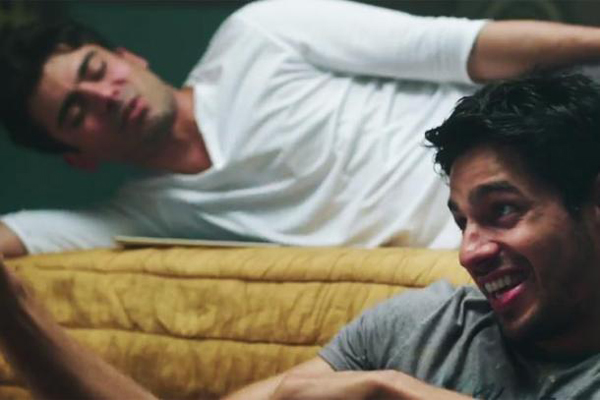 Photo: Screenshot[/caption]
One fine day, the quirky grandfather (
Photo: Screenshot[/caption]
One fine day, the quirky grandfather ( Photo: Screenshot[/caption]
What follows is a household that’s teetering on the brink. Seething with bitterness, yet busy with the daily chores of life – like all dysfunctional families – the Kapoor clan too is always just one dinner-time talk away from reconciliation, but yet at the same time, also just one small act away from completely unravelling into total disintegration.
[caption id="" align="alignnone" width="600"]
Photo: Screenshot[/caption]
What follows is a household that’s teetering on the brink. Seething with bitterness, yet busy with the daily chores of life – like all dysfunctional families – the Kapoor clan too is always just one dinner-time talk away from reconciliation, but yet at the same time, also just one small act away from completely unravelling into total disintegration.
[caption id="" align="alignnone" width="600"]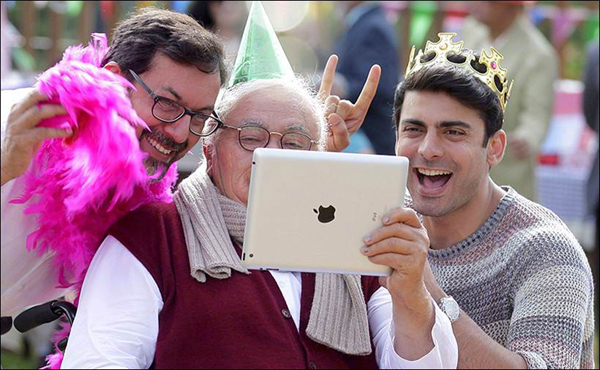 Photo: Screenshot[/caption]
But there is still one person who is obliviously enjoying the reunion: daddu. Now having experienced death at close quarters with the attack, the eccentric patriarch of the family has a simple final wish. A family photograph! But amidst all the Kapoor madness, this straightforward desire turns out to be anything but.
[caption id="" align="alignnone" width="600"]
Photo: Screenshot[/caption]
But there is still one person who is obliviously enjoying the reunion: daddu. Now having experienced death at close quarters with the attack, the eccentric patriarch of the family has a simple final wish. A family photograph! But amidst all the Kapoor madness, this straightforward desire turns out to be anything but.
[caption id="" align="alignnone" width="600"]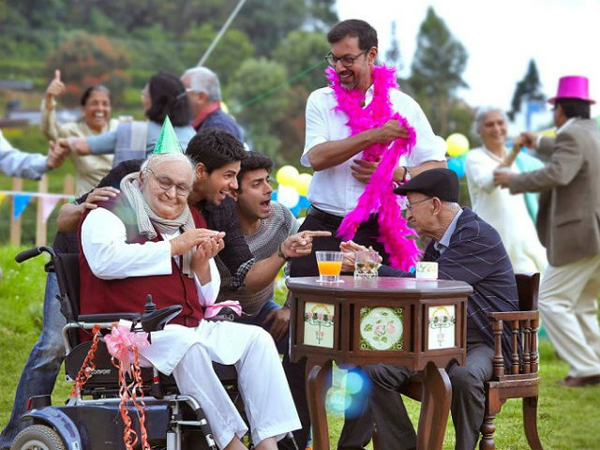 Photo: Ndtv[/caption]
This could be the account of any family anywhere and that is what makes Kapoor & Sons special. The drama is a bitter-sweet slice of your own life. It could have been Sardar & Sons or even Khan & Sons. Heck! ‘Put your own family name’ & Sons, could very well have been the title of the movie, for each of you would find your life parallel to the narrative of the movie at some indeterminate point.
The tale is fascinatingly engaging despite being rooted in the everyday. You might even describe the plot as wafer-thin but what sets it apart from others is the command that
Photo: Ndtv[/caption]
This could be the account of any family anywhere and that is what makes Kapoor & Sons special. The drama is a bitter-sweet slice of your own life. It could have been Sardar & Sons or even Khan & Sons. Heck! ‘Put your own family name’ & Sons, could very well have been the title of the movie, for each of you would find your life parallel to the narrative of the movie at some indeterminate point.
The tale is fascinatingly engaging despite being rooted in the everyday. You might even describe the plot as wafer-thin but what sets it apart from others is the command that  Photo: Screenshot[/caption]
Alia plays her hyper, ditzy, blonde girl act yet again and along with
Photo: Screenshot[/caption]
Alia plays her hyper, ditzy, blonde girl act yet again and along with  Photo: Screenshot[/caption]
But there were no such characterisation issues with the elder sibling,
Photo: Screenshot[/caption]
But there were no such characterisation issues with the elder sibling, 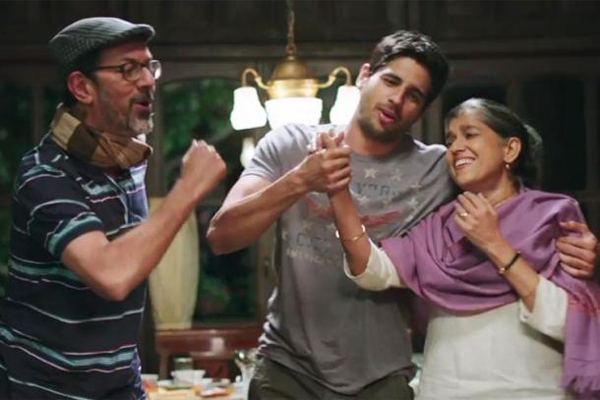 Photo: Screenshot[/caption]
Rishi Kapoor with all the prosthetic work, as the slightly naughty, partly grumpy and completely hedonistic grandfather, lusting after
Photo: Screenshot[/caption]
Rishi Kapoor with all the prosthetic work, as the slightly naughty, partly grumpy and completely hedonistic grandfather, lusting after  Photo: Screenshot[/caption]
The choice of setting, the town of Coonoor is a spectacular idea and the cinematography does the hill station full justice by capturing the freshness with frames where you can, well, almost smell the greenery.
https://www.instagram.com/p/3yoFcZC-7W?
Dialogues are as
Photo: Screenshot[/caption]
The choice of setting, the town of Coonoor is a spectacular idea and the cinematography does the hill station full justice by capturing the freshness with frames where you can, well, almost smell the greenery.
https://www.instagram.com/p/3yoFcZC-7W?
Dialogues are as  [poll id="473"]
[poll id="473"]

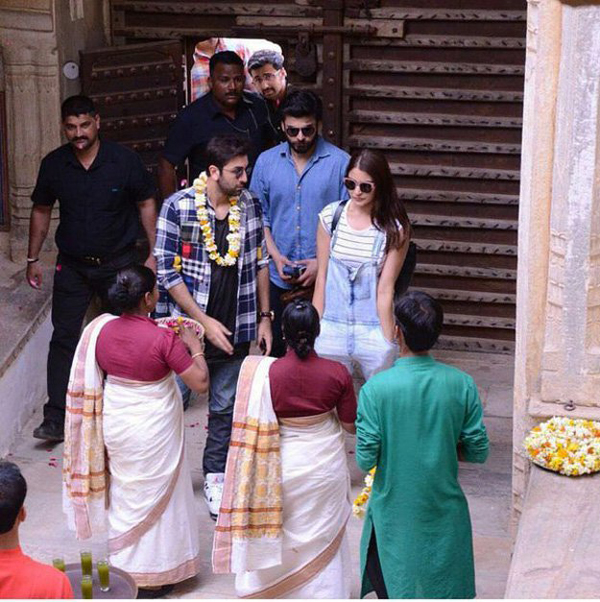 Ranbir Kapoor, Anushaka Sharma and our very own Fawad Khan.
Ranbir Kapoor, Anushaka Sharma and our very own Fawad Khan.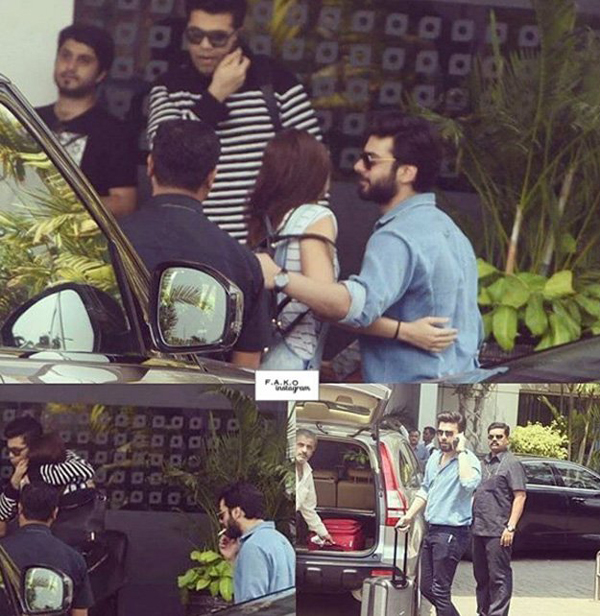 Karan Johar and Fawad Khan
Karan Johar and Fawad Khan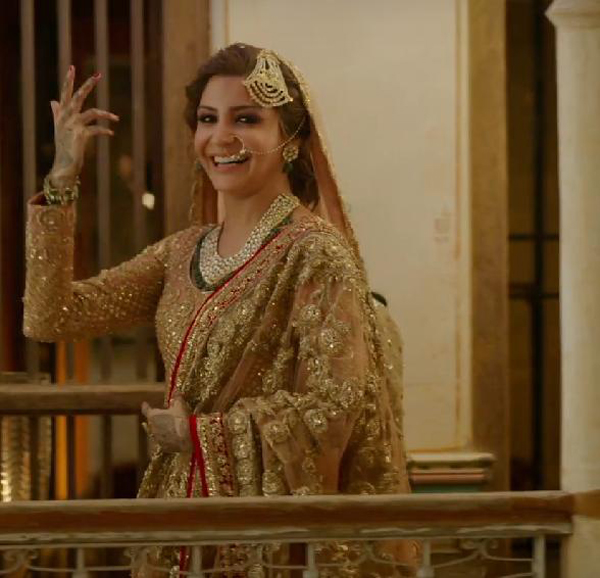 Anushaka Sharma
Anushaka Sharma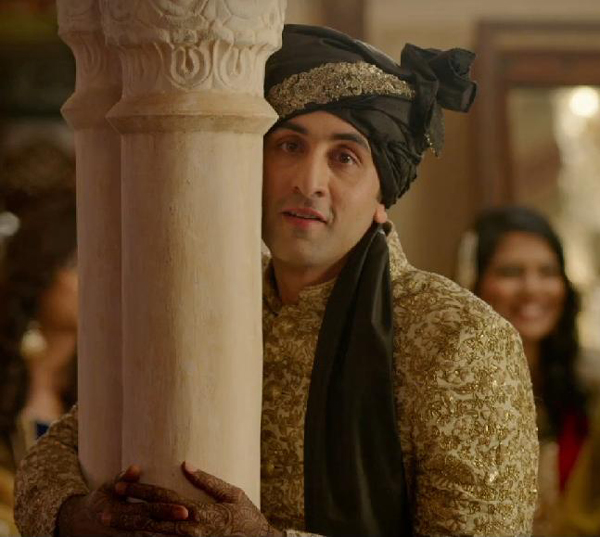 Ranbir Kapoor
Ranbir Kapoor Fawad Khan
Fawad Khan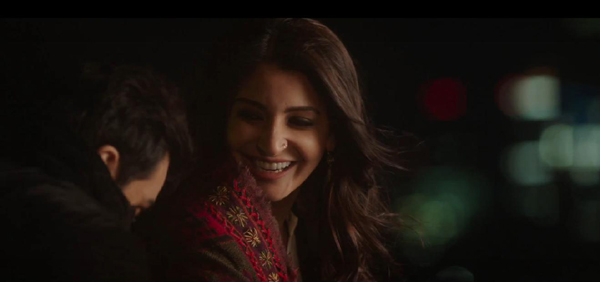 Anushaka Sharma
Anushaka Sharma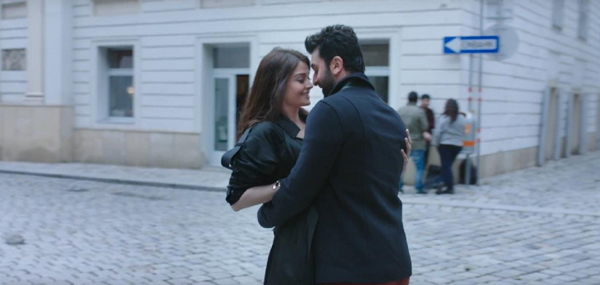 Ranbir Kapoor and Aishwarya Rai Bachan
Ranbir Kapoor and Aishwarya Rai Bachan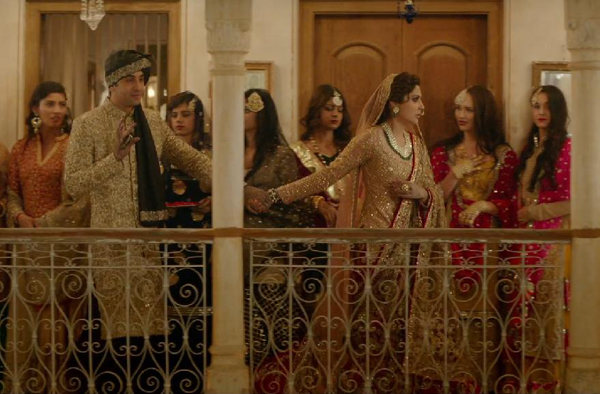 Ranbir Kapoor and Anushaka Sharma
Ranbir Kapoor and Anushaka Sharma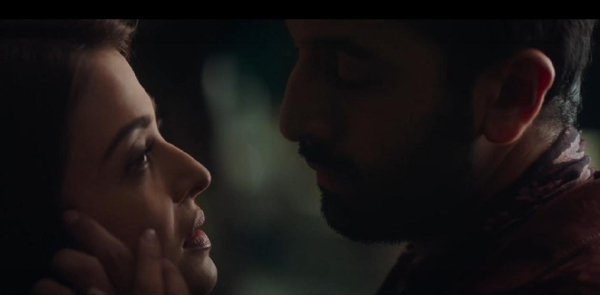 Ranbir Kapoor and Aishwarya Rai Bachan
Ranbir Kapoor and Aishwarya Rai Bachan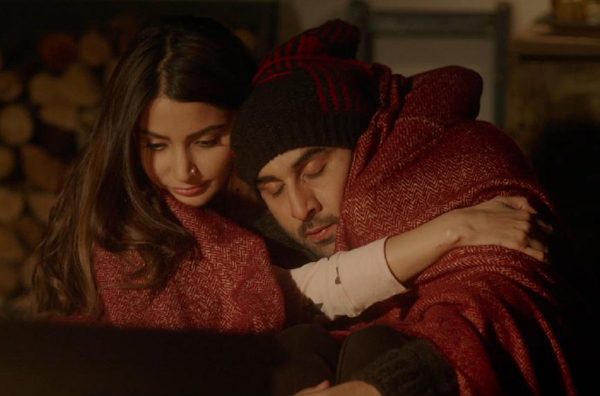 Ranbir Kapoor and Anushaka Sharma
Ranbir Kapoor and Anushaka Sharma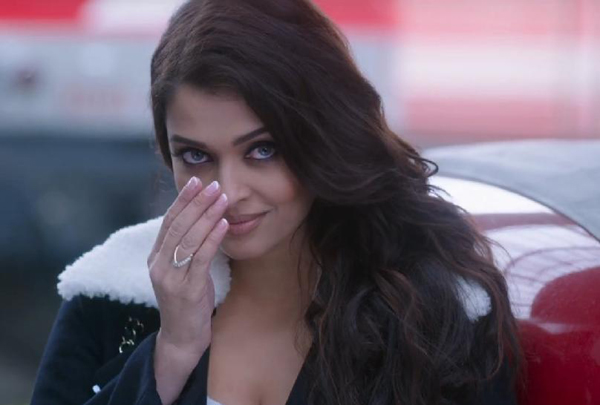 Aishwarya Rai Bachan
Aishwarya Rai Bachan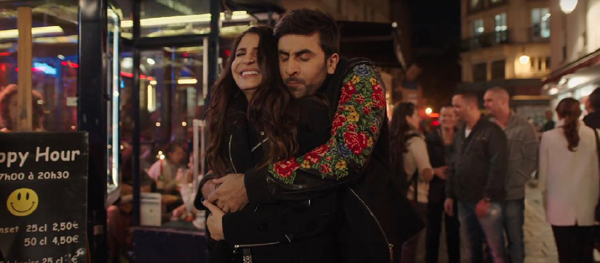 Ranbir Kapoor and Anushaka Sharma
Ranbir Kapoor and Anushaka Sharma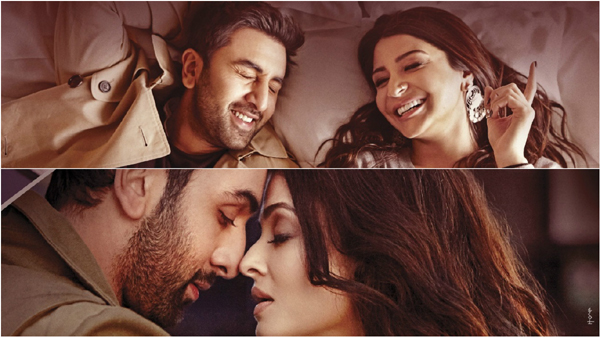 Ranbir Kapoor, Anushaka Sharma and Aishwarya Rai Bachan[/caption]
6. Karan Johar
We will have to accept that Karan Johar is the only director who has a powerful presence, even when he’s behind the lens. He knows how to connect with the audience. In other words, he masters the crowd pulling factor.
[caption id="" align="alignnone" width="600"]
Ranbir Kapoor, Anushaka Sharma and Aishwarya Rai Bachan[/caption]
6. Karan Johar
We will have to accept that Karan Johar is the only director who has a powerful presence, even when he’s behind the lens. He knows how to connect with the audience. In other words, he masters the crowd pulling factor.
[caption id="" align="alignnone" width="600"]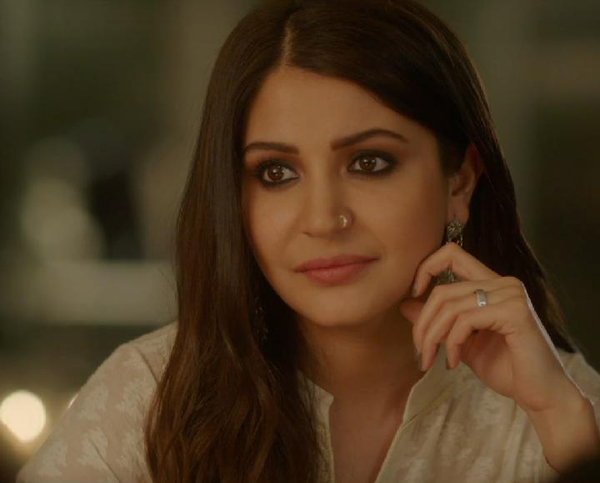 Anushaka Sharma
Anushaka Sharma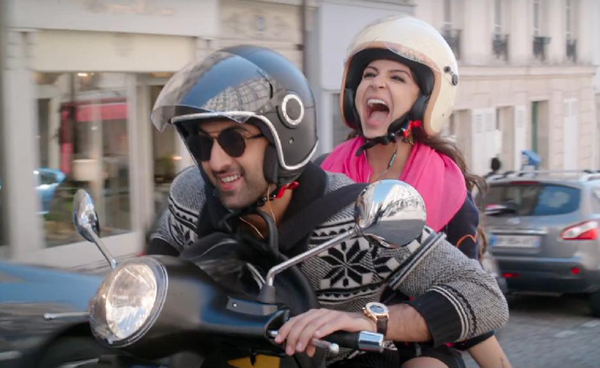 Ranbir Kapoor and Anushaka Sharma
Ranbir Kapoor and Anushaka Sharma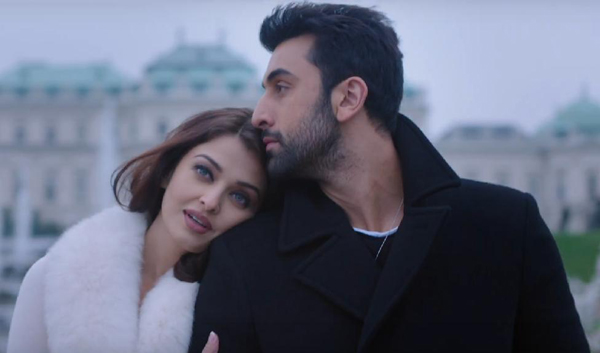 Ranbir Kapoor and Aishwarya Rai Bachan
Ranbir Kapoor and Aishwarya Rai Bachan

 Photo: Twitter[/caption]
The cherry on the cake has to be
Photo: Twitter[/caption]
The cherry on the cake has to be 
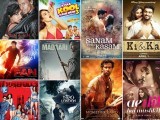
 The be all and end all of movies for some, while a bad joke masquerading as cinema for others, Bollywood is a riddle, wrapped in a mystery, inside an enigma. But yet, every single year, it manages to churn out films that are indisputably bad and 2016 was no different.
So, in no particular order, let the bashing begin.
1) Fan: Rather watch a ceiling fan
Fan is Shah Rukh Khan’s attempt to marry the only two characters he could act out, the wacky (Darr etc.) and the silly (Kabhi Haan Kabhi Naa etc.), before he became the irritatingly tiresome Rahul and the
The be all and end all of movies for some, while a bad joke masquerading as cinema for others, Bollywood is a riddle, wrapped in a mystery, inside an enigma. But yet, every single year, it manages to churn out films that are indisputably bad and 2016 was no different.
So, in no particular order, let the bashing begin.
1) Fan: Rather watch a ceiling fan
Fan is Shah Rukh Khan’s attempt to marry the only two characters he could act out, the wacky (Darr etc.) and the silly (Kabhi Haan Kabhi Naa etc.), before he became the irritatingly tiresome Rahul and the 